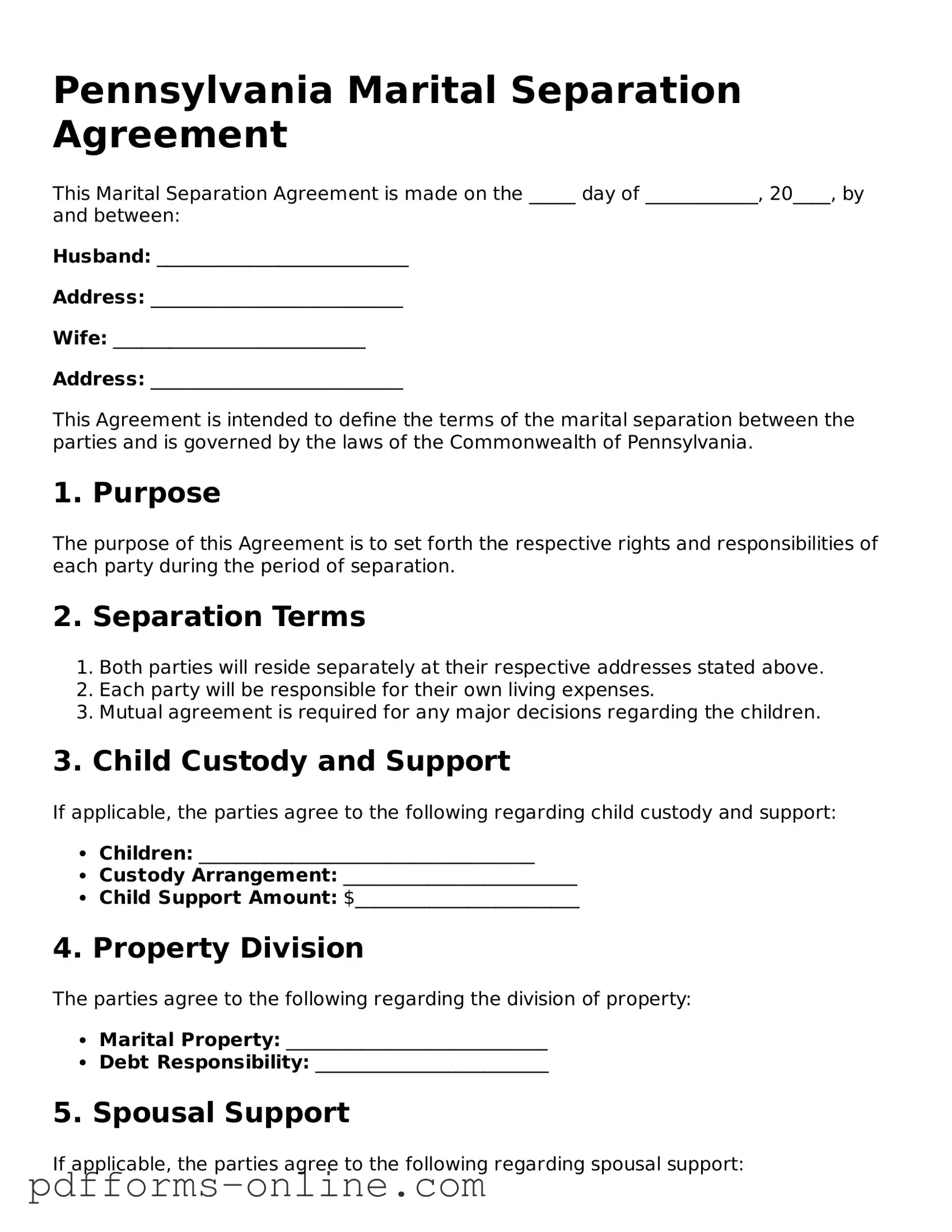Pennsylvania Marital Separation Agreement
This Marital Separation Agreement is made on the _____ day of ____________, 20____, by and between:
Husband: ___________________________
Address: ___________________________
Wife: ___________________________
Address: ___________________________
This Agreement is intended to define the terms of the marital separation between the parties and is governed by the laws of the Commonwealth of Pennsylvania.
1. Purpose
The purpose of this Agreement is to set forth the respective rights and responsibilities of each party during the period of separation.
2. Separation Terms
- Both parties will reside separately at their respective addresses stated above.
- Each party will be responsible for their own living expenses.
- Mutual agreement is required for any major decisions regarding the children.
3. Child Custody and Support
If applicable, the parties agree to the following regarding child custody and support:
- Children: ____________________________________
- Custody Arrangement: _________________________
- Child Support Amount: $________________________
4. Property Division
The parties agree to the following regarding the division of property:
- Marital Property: ____________________________
- Debt Responsibility: _________________________
5. Spousal Support
If applicable, the parties agree to the following regarding spousal support:
- Amount: $__________________________________
- Duration: _________________________________
6. Governing Law
This Agreement shall be governed by and construed in accordance with the laws of Pennsylvania.
7. Signatures
The parties have entered into this Agreement voluntarily and with a full understanding of its terms.
Husband's Signature: ___________________________ Date: ________________
Wife's Signature: ___________________________ Date: ________________
Witness: ___________________________ Date: ________________
